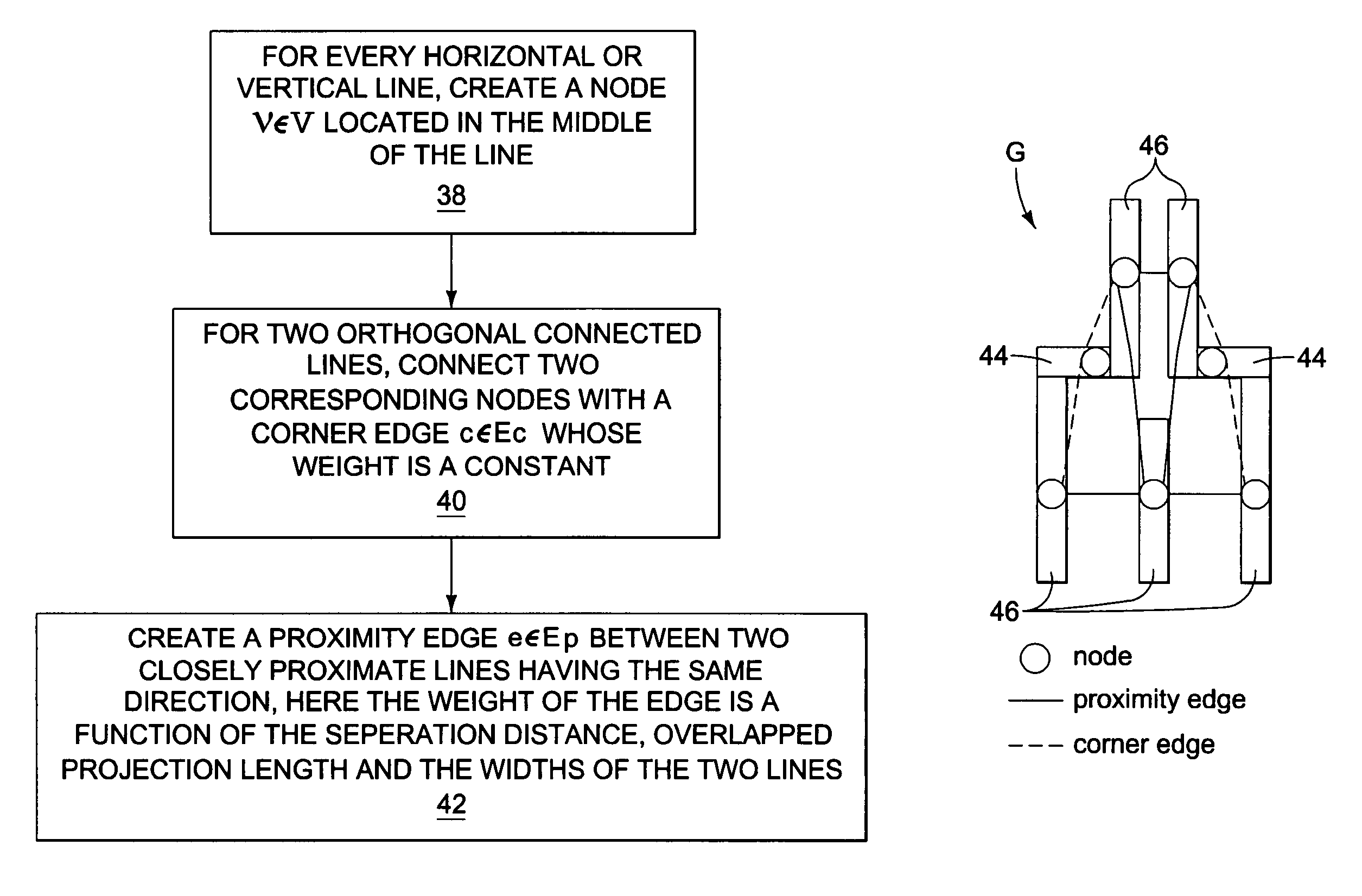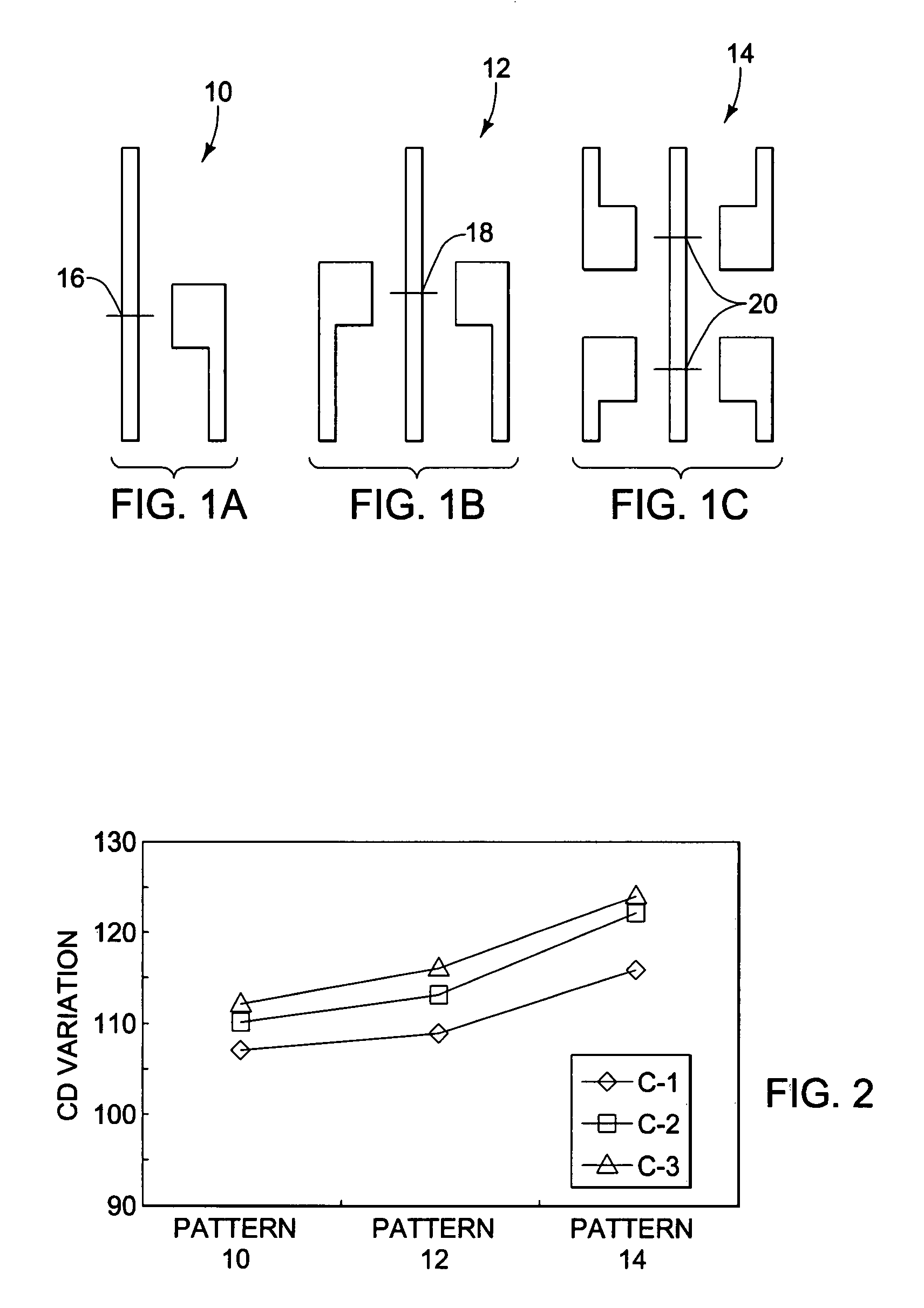Method and apparatus for detecting lithographic hotspots in a circuit layout
a circuit layout and hotspot detection technology, applied in the field of optical lithography, can solve the problems of patterning fidelity, process variation control is more difficult, and the likelihood of degradation of patterning fidelity on vlsi circuits,
- Summary
- Abstract
- Description
- Claims
- Application Information
AI Technical Summary
Benefits of technology
Problems solved by technology
Method used
Image
Examples
Embodiment Construction
G. 10 is a flowchart describing the three-level hotspot detection process;
[0016]FIG. 11 is an exemplary iterative dual node merging heuristic for the hotspot detection method of the present invention; and
[0017]FIG. 12 is a block diagram illustrating a system for implementing the hotspot detection method of the present invention.
DETAILED DESCRIPTION OF THE PREFERRED EMBODIMENTS
[0018]Briefly, the present invention is directed to a detection method for hotspots induced by lithographic uncertainty. The hotspot detection method includes building a layout graph which reflects pattern-related critical dimension (CD) variation. Given a layout L, the layout graph G=(V, Ec∪Ep) consists of nodes V, corner edges Ec and proximity edges Ep between the nodes V. A face in the layout graph includes several close features and the edges between them. The weight given to the edges is calculated from a traditional 2-D model. Then a three-level hotspot detection is applied: (1) edge-level detection finds...
PUM
 Login to View More
Login to View More Abstract
Description
Claims
Application Information
 Login to View More
Login to View More - R&D
- Intellectual Property
- Life Sciences
- Materials
- Tech Scout
- Unparalleled Data Quality
- Higher Quality Content
- 60% Fewer Hallucinations
Browse by: Latest US Patents, China's latest patents, Technical Efficacy Thesaurus, Application Domain, Technology Topic, Popular Technical Reports.
© 2025 PatSnap. All rights reserved.Legal|Privacy policy|Modern Slavery Act Transparency Statement|Sitemap|About US| Contact US: help@patsnap.com



